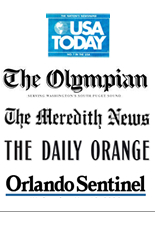
In case of emergency, put your cell on ICE
A movement is underway to turn the ubiquitous cell phone into a source of information for paramedics and other emergency personnel responding to accidents, crimes and disasters.
A British paramedic came up with the idea of asking cell phone users to input an entry into their cellular phonebook called ICE for "in case of emergency." Accompanying that acronym would be the name and phone numbers of the person who should be called if something has happened to the owner of the phone.
The ICE campaign was launched in Britain in April, but people really started paying attention after the July terrorist bombings in London that killed 56 and injured hundreds.
Bob Brotchie, a Cambridge-based paramedic for 13 years, says he has responded to many accidents in which the injured person carried no information about next of kin or emergency contacts. This makes it difficult for paramedics because they don't know the patient's medical history or allergies, he says.
The British campaign, initially promoted in conjunction with Vodafone's annual Life Savers Awards, is "going phenomenally well," says Brotchie. Vodaphone is a British mobile phone company.
Now paramedics in the USA want to encourage ICE usage by Americans. "I certainly think it can help," says Matthew Levy of the International Association of EMTs and Paramedics. "(We are) hoping that we can get people excited."
Joe Farren of the Cellular Telecommunications and Internet Association-Wireless Network says the industry is definitely interested in joining the campaign.
And word is spreading in the USA via news reports and word of mouth.
Linda Huntress of Meredith, N.H., received an e-mail about ICE that she forwarded to her friends and family. She programmed ICE into her phone, noting that it's better than other forms of identification because women sometimes go out without a purse but bring their cell phones.
"Basically, we have cell phones so that we have a way to reach help," she says. "I would want my family to know what happened to me."
Farren says there are so many different U.S. service providers that one of the challenges is getting all the companies to promote use of the same acronym. If they don't, it will be confusing to those who need the number, he says.

Newspapers that I have worked for:

Awards
The Samuel V. Kennedy Award for Newspaper Editing
From the Newhouse school, given to a graduating senior who has demonstrated newsroom leadership and the potential to make a difference in newspaper editing.
Best Redesigned Paper 2006
Student Society of News Design, The Daily Orange
2005 Newspaper Pacemaker Finalist
Associated Collegiate Press, The Daily Orange
Best-Designed College Daily 2005
Student Society for News Design, The Daily Orange
Dean's List
Fall 2002 to present
Dean's Scholarship
from the Syracuse University Admissions Committee, 2002 through 2006
References
Dennis Kelly
USA Today
Senior assignment editor
703.854.2130
Keith Rogers
The Meredith News
Editor
603.279.4516
Emilie Davis
Syracuse University
Copy editing professor
315.443.9330 or
315.638.7682